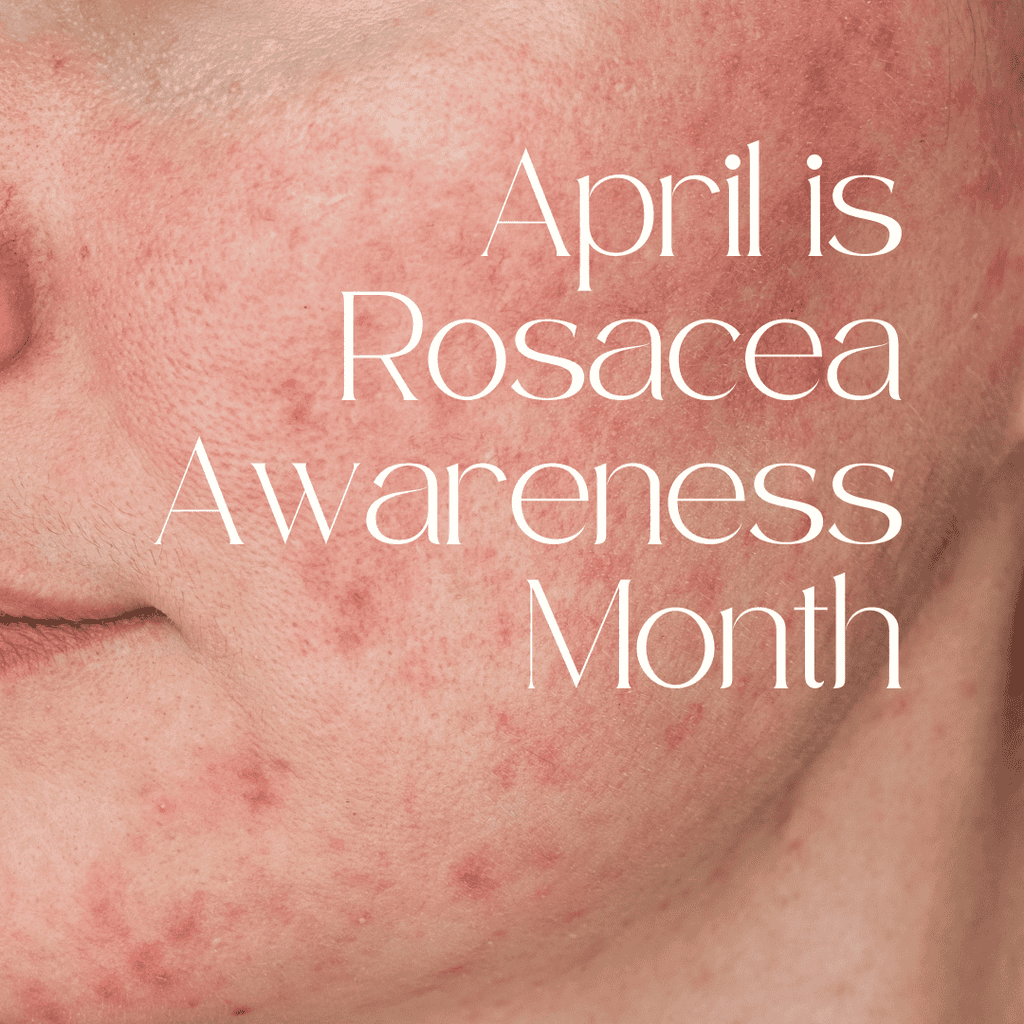
According to the NHS, around 1 in 10 of us suffer with Rosacea. So it’s fair to say we aren’t alone in what can feel like a never ending battle to fight the blush and calm the redness. But, despite what we often hear about it, and what the name suggests, there is more to this skin condition than just the red flush it is most known for. Rosacea is a chronic inflammatory skin condition characterised by persistent facial redness, but also includes symptoms like visible blood vessels, acne-like bumps, papules, pustules and even the thickening of the skin (mostly on the nose). And despite being as common as it is, it’s a pretty misunderstood skin condition – which is why Rosacea Awareness Month this April is the perfect opportunity to shine a light on this otherwise overlooked and underplayed condition.
Causes and Triggers
The exact cause of Rosacea is still unknown, but many factors have been found to contribute to its development. This is anything from genetics, immune system dysfunction, environmental triggers. Recent research has found Rosacea could be caused by inflammation in the body. But, what’s causing the inflammation to occur in the first place?
Well, although inflammation is often rather demonised, it plays an important role in the body’s ability to heal injuries and fight off infections. Meaning our immune system activates cells which leads to inflammation. With Rosacea, it can be that the immune system is set off by Rosacea triggers – anything from UV rays, heat or even spicy foods. Another factor that can be triggering our immune system to offset Rosacea symptoms are something called Demodex. Demodex are microscopic organisms or mites that reside in and around hair follicles and sebaceous glands, like on the face. Despite their presence on the skin being very common, Demodex don’t typically cause any harm, but an imbalance or overabundance of these mites have in studies as recent as 2024 been linked to certain skin conditions, including Rosacea. This is believed to be because Demodex mites may contribute to the development/exacerbation of Rosacea by triggering an inflammatory response in the skin, which ultimately leads to symptoms like redness, flushing, and acne-like bumps.
Managing Rosacea
In order to truly manage this condition there are 3 key elements to address; reducing symptoms, preventing flare-ups, and improving overall skin health. And fortunately, there are a few measures we can take to manage and minimise the symptoms of Rosacea. Firstly, to avoid triggering any inflammation we can start with a process of elimination. Of course, for each person your flare up triggers will vary, so it can be a case of trial and error, but the general triggers that people notice include hot beverages, alcohol, spicy foods and extreme temperatures.
The use of regular and consistent sun protection is one significant measure that can be put in place to help reduce damage caused by UV rays. But its important to note that not all sunscreens are right for those with Rosacea. Chemical sunscreens, which absorb UV rays, have been known to cause stinging or burning flare ups on sensitive skin, whereas mineral sunscreens (which usually contains zinc oxide/titanium oxide) are often less irritating as they sit on top of the skin and work to physically block the UV rays. So a natural, mineral sunscreen is perhaps the most suited for those with Rosacea.
Stress has also been linked with increased Rosacea symptoms so putting in place some stress management techniques such as yoga, meditation and deep breathing exercises can help reduce the likelihood of experiencing stress induced symptoms.
For many of us we may already have a skincare routine in place, but ensuring this routine is gentle, fragrance-free and free from harsh exfoliants/abrasive scrubs is important. At Vemel our entire range of products are natural, waterless, pure and potent so even the most sensitive skin can benefit from it – but a few stand out products for Rosacea specifically would firstly be our Wonder Balm. Rather than opting for harsh, damaging topical steroid creams, Wonder Balm is a healing and soothing hero, with healing ingredients like Chamomile and Calendula that work wonderfully to reduce and alleviate signs of irritation and inflammation in the skin.
Having a healthy skin barrier is a great way to prevent inflammation as the skin is better able to fight off potential triggers. So using a skin barrier healing product can make all the difference for those managing Rosacea.
Skin cleansing is the first step to restore and maintain a healthy skin barrier. Opt for a gentle yet effective rosacea-friendly cleanser like No.1 Cleansing Oil. Ensuring this step is fragrance-free and free from harsh exfoliants/ abrasive scrubs is important.With two powerful and potent serums to choose from, you can tailor your choice to your specific skin needs. For those dealing with Rosacea as well as being more break out prone, our Active Radiance Serum delivers an abundance of antioxidants and goodness to the skin to work in repairing and healing your skin barrier. A dryer, more dehydrated skin type however, can reap the endless benefits of our Advanced Protective Serum, which helps lock in hydration as well as promoting collagen production to create a healthy, happy and radiant glow as well as a strong skin barrier. Selecting the perfect moisturizer for rosacea is cruical for maintaining skin health. Opt for formulations devoid of fragrances, acids, salicylic acid, alcohol, and witch hazel. Instead, prioritize barrier-repairing formulas that offer soothing effects and are non-comedogenic. Embrace our Vitamin Rich Face Butter that not only promotes healthy skin cell turnover, but also boasts a luxurious blend of soothing vitamin E and potent anti-inflammatory botanicals while promoting graceful ageing.
Overall, putting in place these few simple measures can make all the difference to manage and minimise the impact Rosacea can have on the skin and mind, so you can feel your very best!